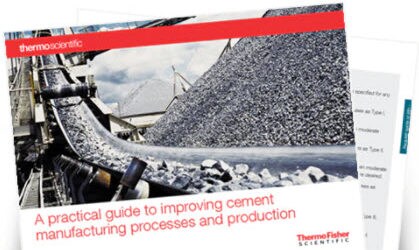Thermal maturity is a critical factor in assessing the quality and energy potential of organic matter in geological formations like shale and coal. Traditionally, indicators such as organic matter reflectance (Ro) and programmed temperature pyrolysis (Tmax) have required intensive lab work. But a recent study by the U.S. Geological Survey and the Wyoming-Montana Water Science Center is changing this narrative, offering a portable, streamlined solution through Raman spectroscopy.
Why Raman spectroscopy is an effective technique for thermal maturity assessment
Raman spectroscopy has emerged as a valuable tool for geological analysis, particularly in assessing the thermal maturity of organic matter in shale and coal samples. Several factors contribute to its effectiveness:
- Nondestructive analysis: Raman spectroscopy is a nondestructive technique, allowing for the examination of whole-rock samples without altering their physical or chemical properties. This characteristic is particularly important in geological studies, as it enables researchers to preserve samples for further testing and analysis.
- Rapid and real-time measurements: With advancements in portable Raman systems, researchers can obtain real-time data on thermal maturity in the field. This rapid analysis reduces the time and costs associated with transporting samples to laboratories, enabling immediate decision-making and enhancing operational efficiency.
- Minimal sample preparation: Raman spectroscopy requires minimal sample preparation compared to traditional methods such as organic matter reflectance (Ro) and programmed temperature pyrolysis (Tmax). The ability to analyze crushed whole-rock samples with simple washing and drying techniques streamlines the workflow, making it more accessible for field applications.
- High sensitivity and specificity: Raman spectroscopy is known for its sensitivity to molecular vibrations, which allows for precise identification of organic compounds and their thermal maturity. The technique can effectively differentiate between various kerogen types and assess changes in molecular structure that occur during the thermal maturation process.
- Portability and flexibility: The development of portable Raman systems has made it possible to conduct analyses in remote locations where traditional lab access may be limited. This portability allows researchers to collect valuable data directly from the field, adapting to various geological settings and enhancing the versatility of thermal maturity assessments.
U.S. geological survey and the Wyoming-Montana Water Science Center study
Published in the International Journal of Coal Geology, the study explores the use of a portable process Raman analyzer with a 785 nm laser to examine organic matter in shale and coal samples. Researchers tested this tool on 32 samples with a wide range of thermal maturities, ages, and kerogen types (Types I, II, and III), aiming to correlate Raman band separation (RBS) values with traditional indicators like Ro and Tmax.
Study goals
- To develop a simple, field-ready method for assessing thermal maturity in organic matter
- To bridge RBS values obtained via Raman spectroscopy with traditional indicators (Ro and Tmax), facilitating cross-method correlations
Methodology
Sample preparation: After testing various methods, it was found that washing, drying, and hand-crushing samples for passage through a 40-mesh sieve yielded the most consistent RBS values.
Equipment and setup: Data collection used a portable process Raman system with a compact 1000 Wh power station, enabling intermittent use over several days without recharging. The system’s 9 kg weight made it easy to transport via backpack or hard case, making it ideal for remote fieldwork.
Results and Key Findings
The researchers observed strong correlations between RBS values and Ro up to 3% and Tmax up to 551°C, suggesting that Raman spectroscopy could reliably assess thermal maturity across varied geological contexts. Additionally, the portable setup supported extended field operation, streamlining data collection and improving the efficiency of field-based analysis.
Why portable Raman spectroscopy is a game-changer
The study’s success highlights the potential of Raman spectroscopy for on-site, real-time thermal maturity analysis, eliminating the delays and costs associated with traditional lab-based methods. This portable setup can revolutionize organic matter analysis in coal and shale formations, providing critical data in remote locations and advancing the efficiency of geological assessments.

Conclusion
The U.S. Geological Survey’s approach with portable Raman spectroscopy marks a major step forward for field-based geological research. With ongoing improvements in Raman technology, geologists may soon rely on Raman band separation values as a primary method for thermal maturity analysis, benefiting from both accuracy and ease of deployment.
Citations and Additional Resources
1 p.2, M.R. Stokes, A.M. Jubb, P.C. Hackley, J.E. Birdwell, E.P. Barnhart, C.T. Scott, J.L. Shelton, M.M. Sanders, J.J. Hatcherian, Evaluation of portable Raman spectroscopic analysis for source-rock thermal maturity assessments on bulk crushed rock, International Journal of Coal Geology, Volume 279, 2023, 104374, ISSN 0166-5162, https://doi.org/10.1016/j.coal.2023.104374. (https://www.sciencedirect.com/science/article/pii/S0166516223001921)
Photo above: “Data were collected using a MarqMetrix All-In-One portable Raman probe which is equipped with a handheld wand connected by fiber optic cable to a combined computer-spectrometer that measures 25 × 25 × 7.5 cm. A computer screen is required to control the instrument and view data. The total weight of the instrument is ~9 kg, and it can be easily transported via external frame backpack or hard case,” the authors wrote.1


Leave a Reply